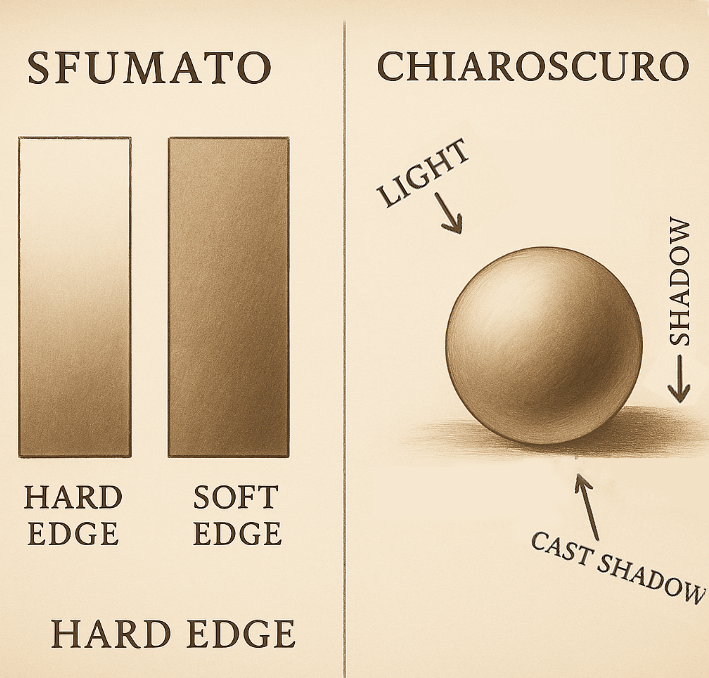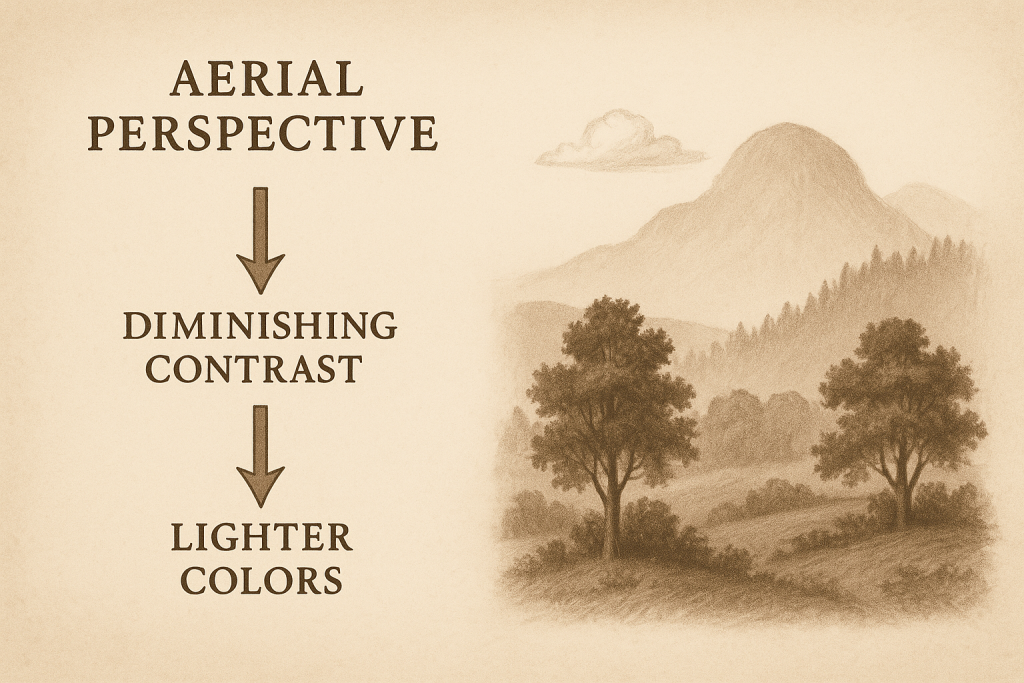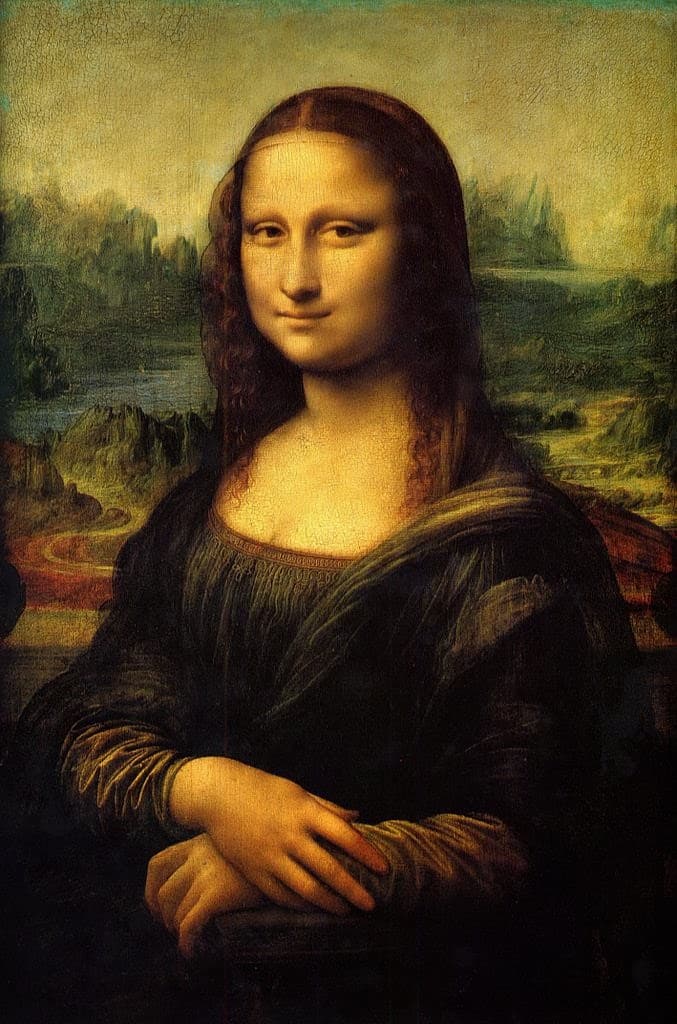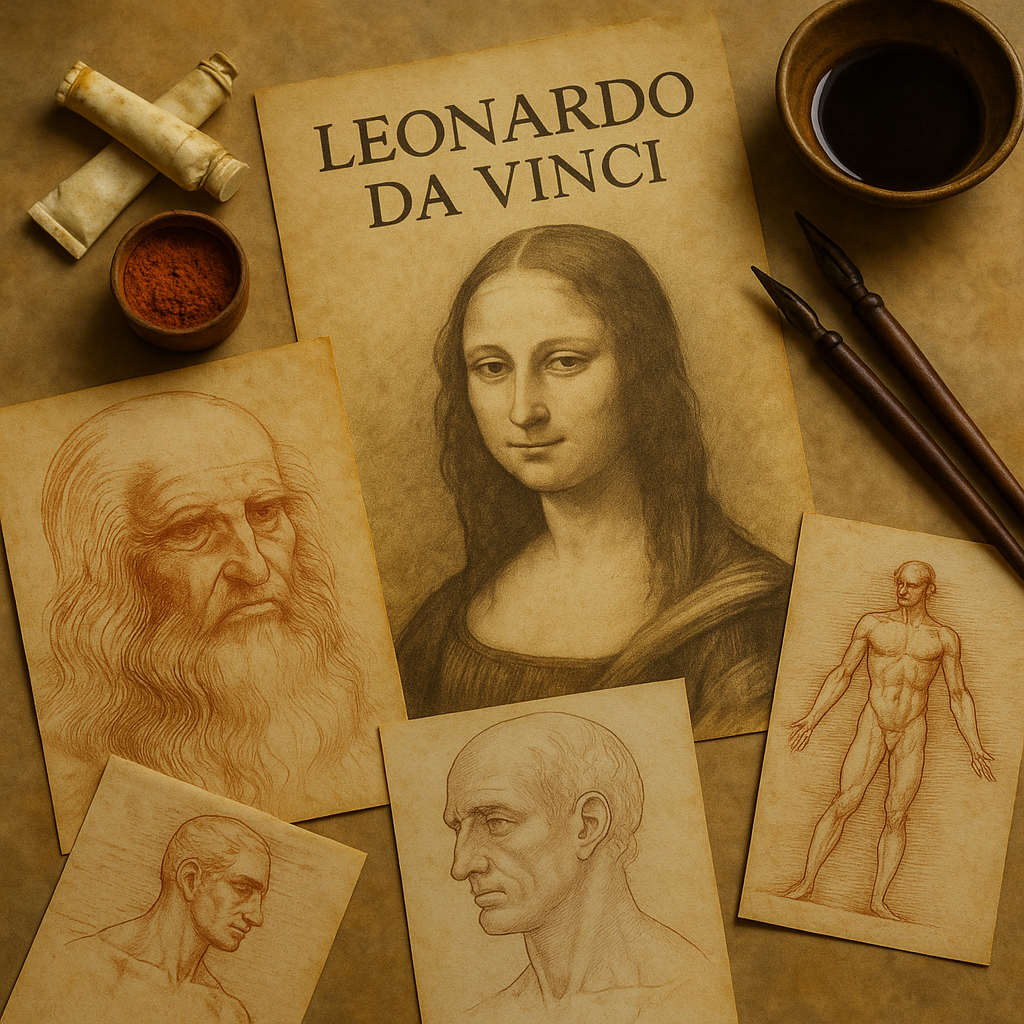When you stand before Leonardo da Vinci’s Mona Lisa in perso, it’s not the size that strikes you first — it’s the sense that she’s alive. Her smile seems to shift, the air around her feels soft and deep, and her presence extends beyond the panel she inhabits.
How did Leonardo pull off this kind of dimensional sorcery centuries before photography?
It wasn’t luck. It was a deliberate, layered approach to light, anatomy, and atmosphere — techniques that remain the backbone of realistic painting today.
Let’s explore some of Leonardo’s signature methods 👇
🌫 1. Sfumato — “Vanished Like Smoke”
Yes, I never spell nor pronounce these terms properly 😉 — it’s sfumato, from the Italian sfumare, meaning “to evaporate like smoke.”
Leonardo developed sfumato as a way to eliminate harsh edges and create gradual tonal transitions, especially around the contours of faces and hands. Instead of outlining forms, he layered ultra-thin glazes of paint, allowing colors to merge softly.
👉 Result: Edges blur imperceptibly, giving figures a gentle roundness — almost as if lit by real air rather than studio lamps. The Mona Lisa’s cheeks and jawline practically melt into the background, creating the illusion of depth and softness.
Modern takeaway: If you’re painting or drawing realistically, soften your edges strategically. Not everything needs to be outlined; let light do the sculpting.
🌗 2. Chiaroscuro — Sculpting with Light and Shadow
Leonardo was also a master of chiaroscuro, the bold interplay of light (chiaro) and dark (oscuro) to create three-dimensional volume.
While earlier painters used flat, symbolic shading, Leonardo observed how light wraps around real forms. He modeled faces and bodies using gradual value shifts, anchoring them with deep shadows and luminous highlights.
👉 Think of chiaroscuro as painterly 3D printing: light builds the form, shadow pushes it back, and the contrast makes it pop off the panel.
Modern takeaway: Study a single light source. Where does light hit your subject? Where does it die? Use value, not line, to build volume.

🌄 3. Aerial (Atmospheric) Perspective
Look closely at the backgrounds in Leonardo’s paintings, and you’ll notice the distant mountains fade into cool blue haze. This isn’t decorative — it’s science.
Leonardo was one of the first artists to apply aerial perspective, observing how particles in the air scatter light, making distant objects appear:
Lighter in value
Cooler in color temperature
Less detailed
👉 By subtly shifting hues and softening details in the background, he created believable depth without relying on linear perspective alone.
Modern takeaway: Warm, detailed foregrounds + cool, desaturated backgrounds = instant depth.

🧠 4. Anatomical Accuracy — Painting What He Knew, Not Just What He Saw
Leonardo’s relentless dissections and anatomical studies gave him an edge no artist had before. He knew how muscles and bones behaved beneath the skin, and that knowledge informed his brush.
Instead of painting generic bodies, he modeled structure accurately, from the subtle twist of a wrist to the way lips stretch over teeth in a smile. His figures feel alive because their architecture is true.
Modern takeaway: Learn the structure beneath the surface. Even in loose work, understanding anatomy or form makes your realism more convincing.
🪄 5. Layering & Glazing — Building Reality Gradually
Leonardo painted slowly. Very slowly.
He worked in multiple transparent oil glazes, sometimes dozens of layers deep. Each glaze adjusted color temperature and value slightly, creating subtle transitions and a luminous effect you can’t get from one opaque coat.
This method also allowed him to make incremental adjustments — softening here, enriching shadows there — until the surface looked less like paint and more like flesh and air.
🎨 Bringing It All Together
Leonardo’s genius wasn’t just his technical chops; it was his synthesis. He layered:
Sfumato for softness
Chiaroscuro for volume
Aerial perspective for space
Anatomical knowledge for structure
Glazing for luminous subtlety
The result: paintings that still feel startlingly real 500 years later.

✍️ Practical Takeaways for Modern Artists
Study edges: Soften them strategically (sfumato), don’t outline everything.
Work in values: Think sculpturally — light vs shadow.
Control atmosphere: Cool down and lighten distant areas.
Learn structure: Knowledge underpins convincing realism.
Be patient: Build layers, don’t rush realism.
🕰 A Legacy That Transcends Time
Leonardo da Vinci wasn’t chasing realism for realism’s sake — he wanted to understand how the world works, then translate that understanding into paint. That’s why his portraits feel like living beings, not static images.
Next time you pick up a brush or pencil, remember: you don’t need magic to bring your work to life — just a bit of Leonardo’s curiosity, patience, and smoke-like softness.



